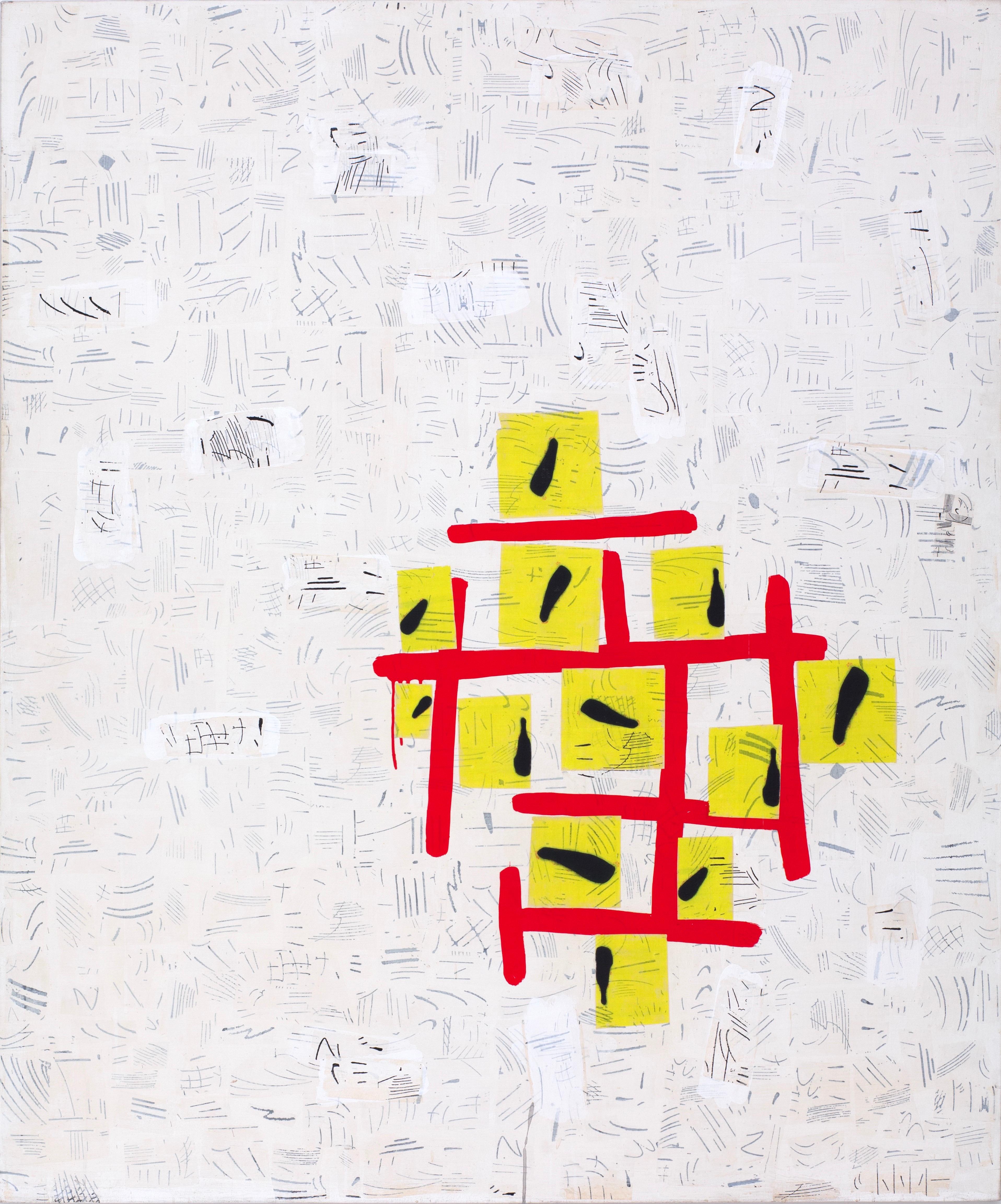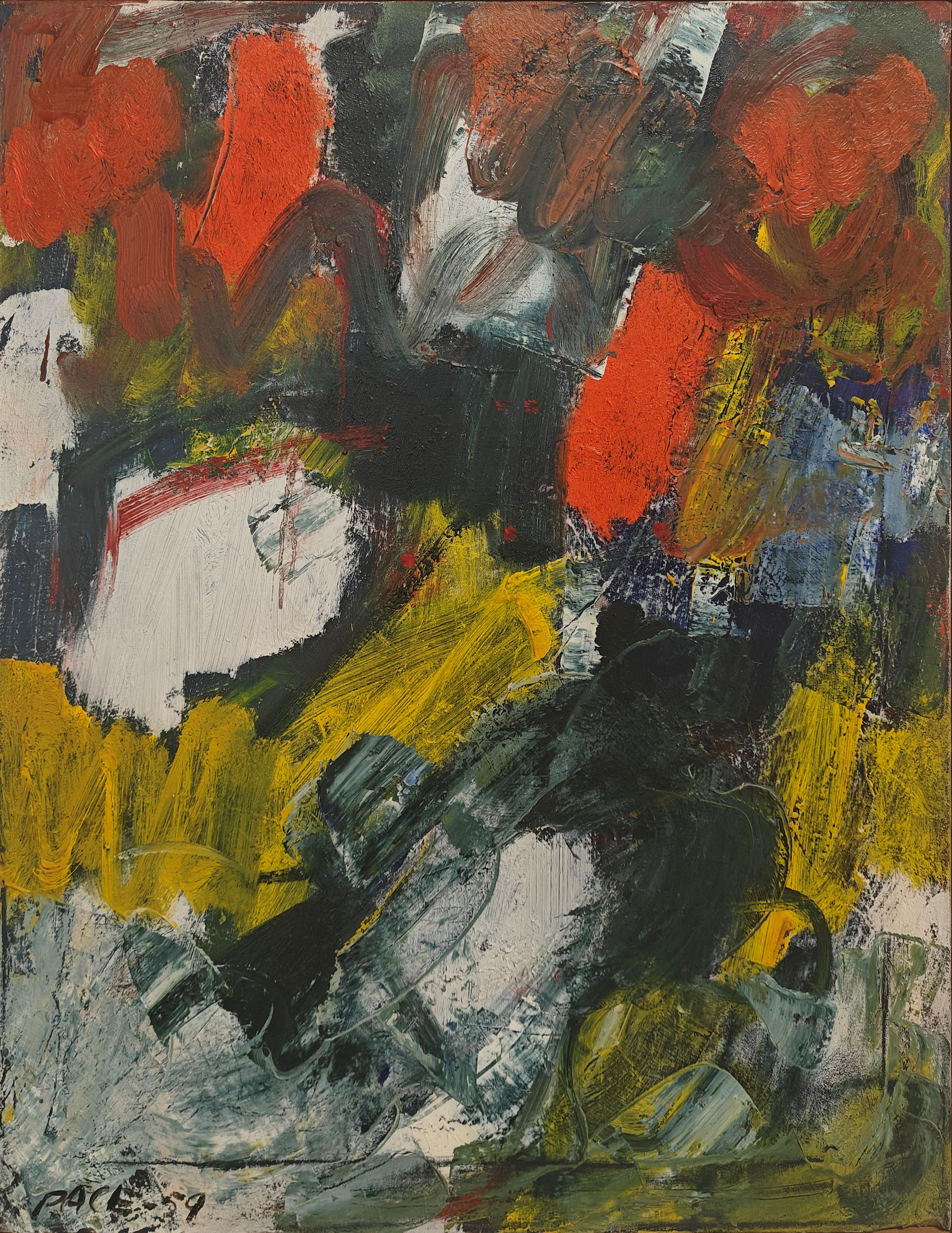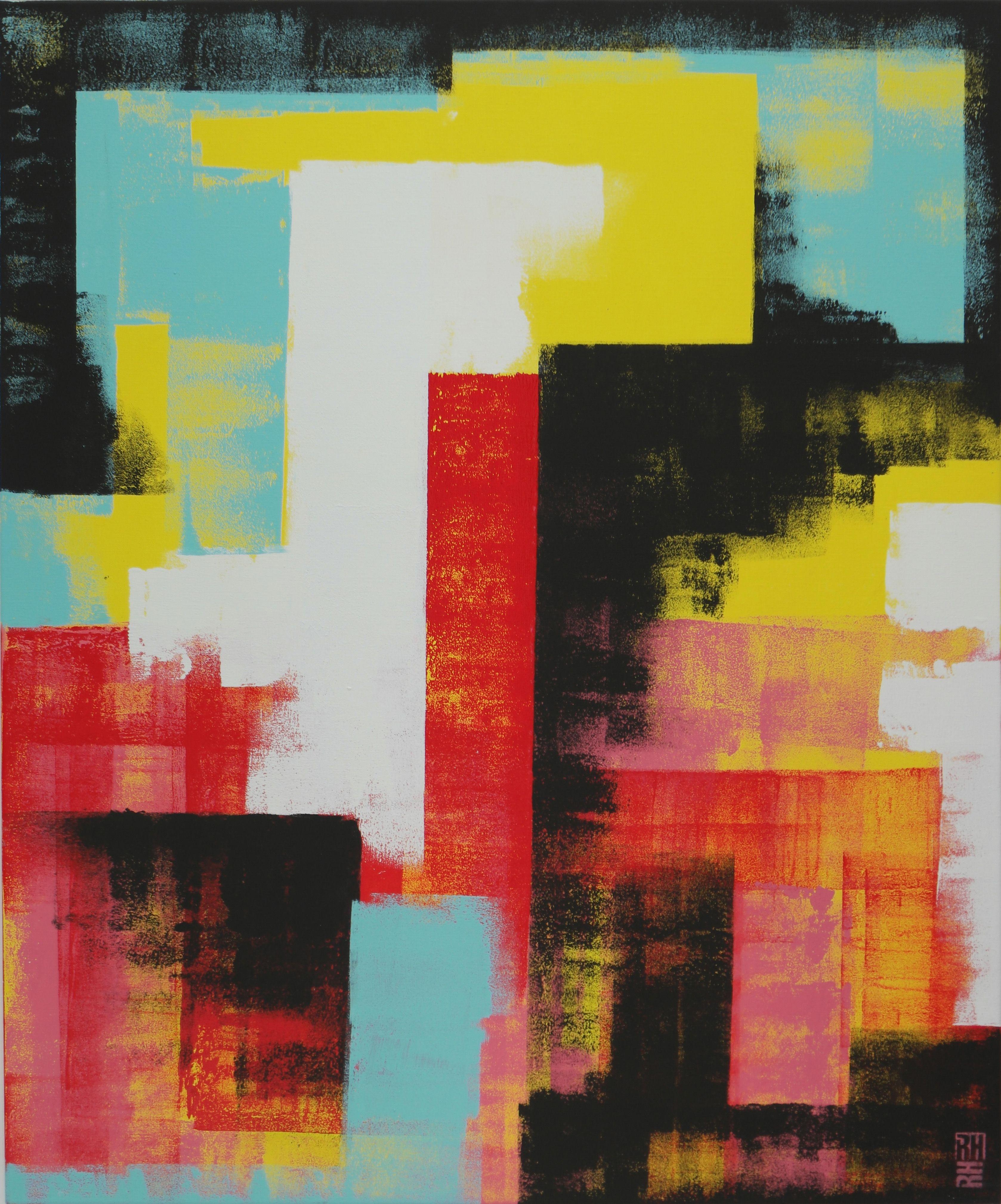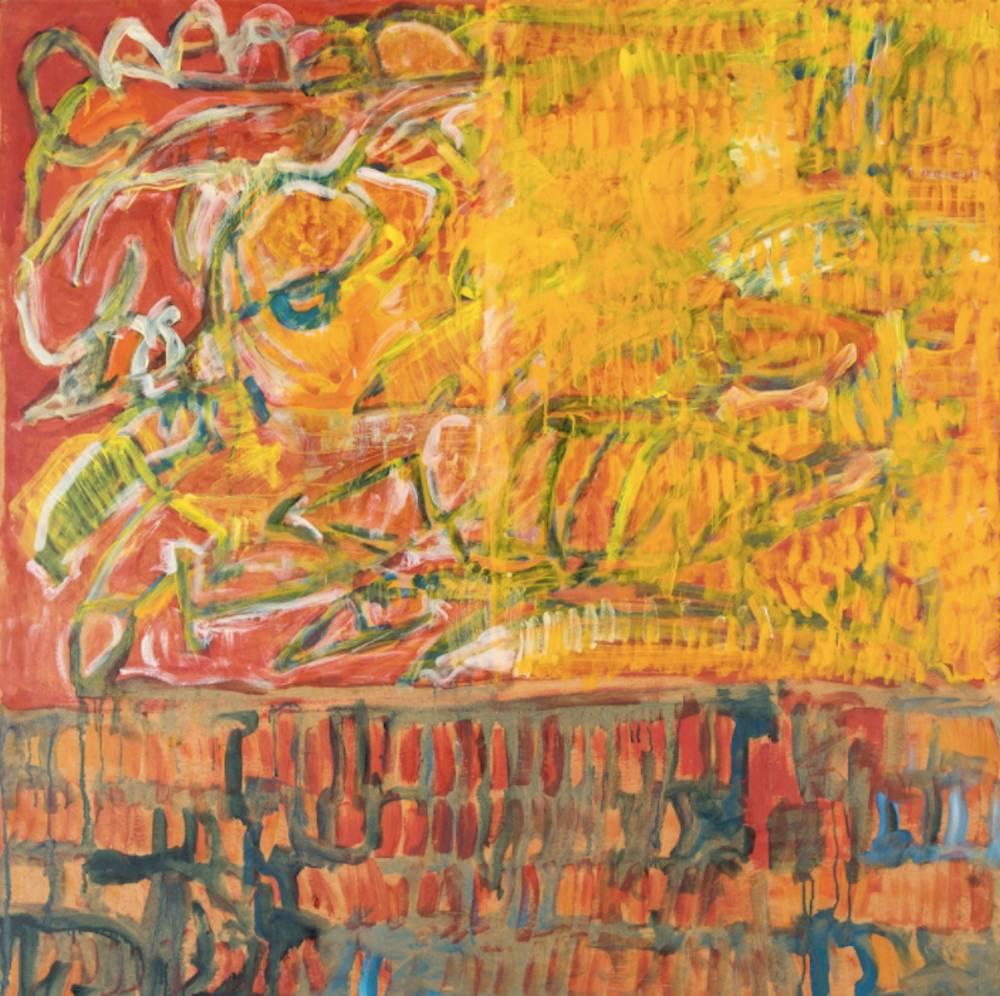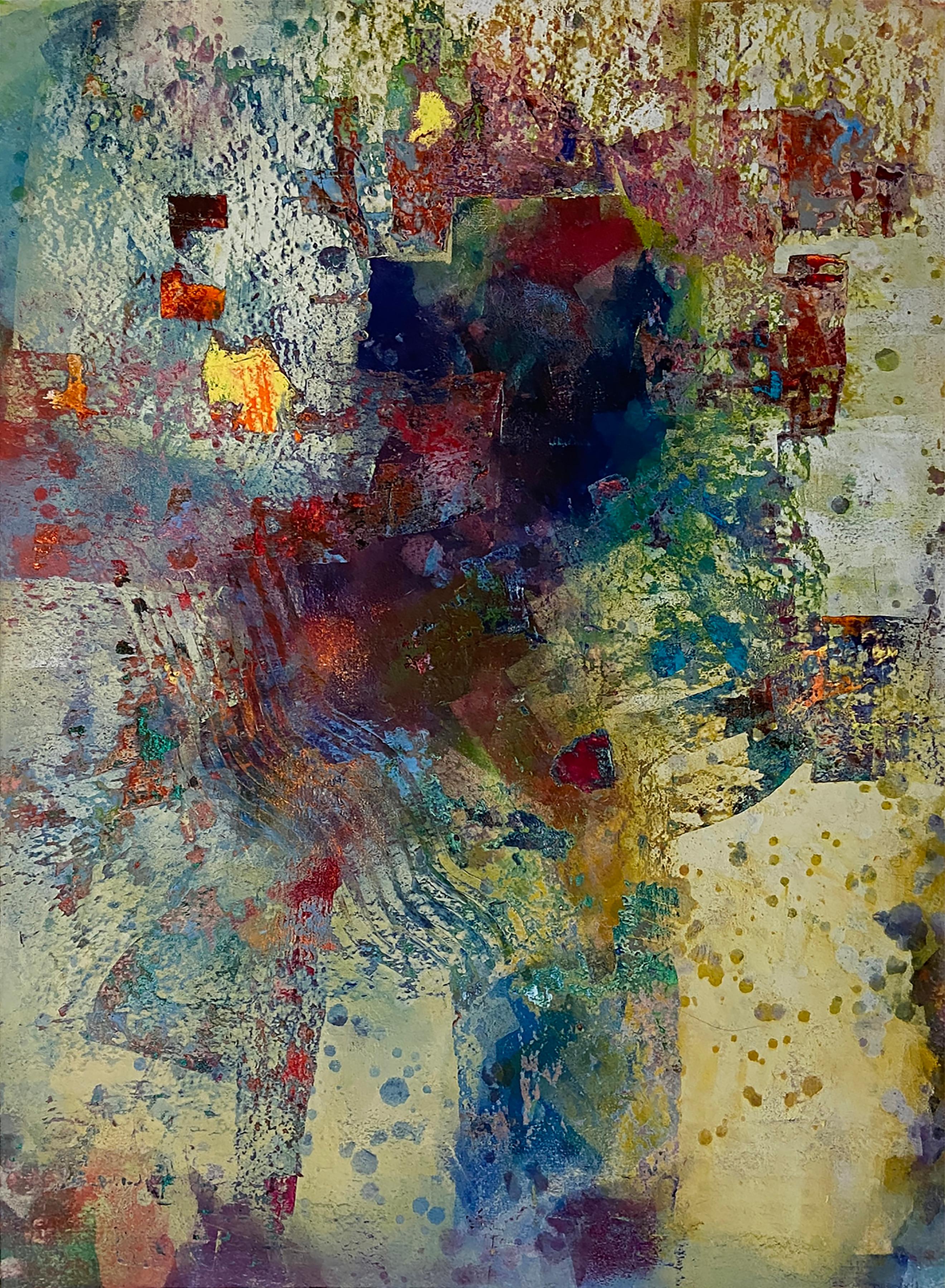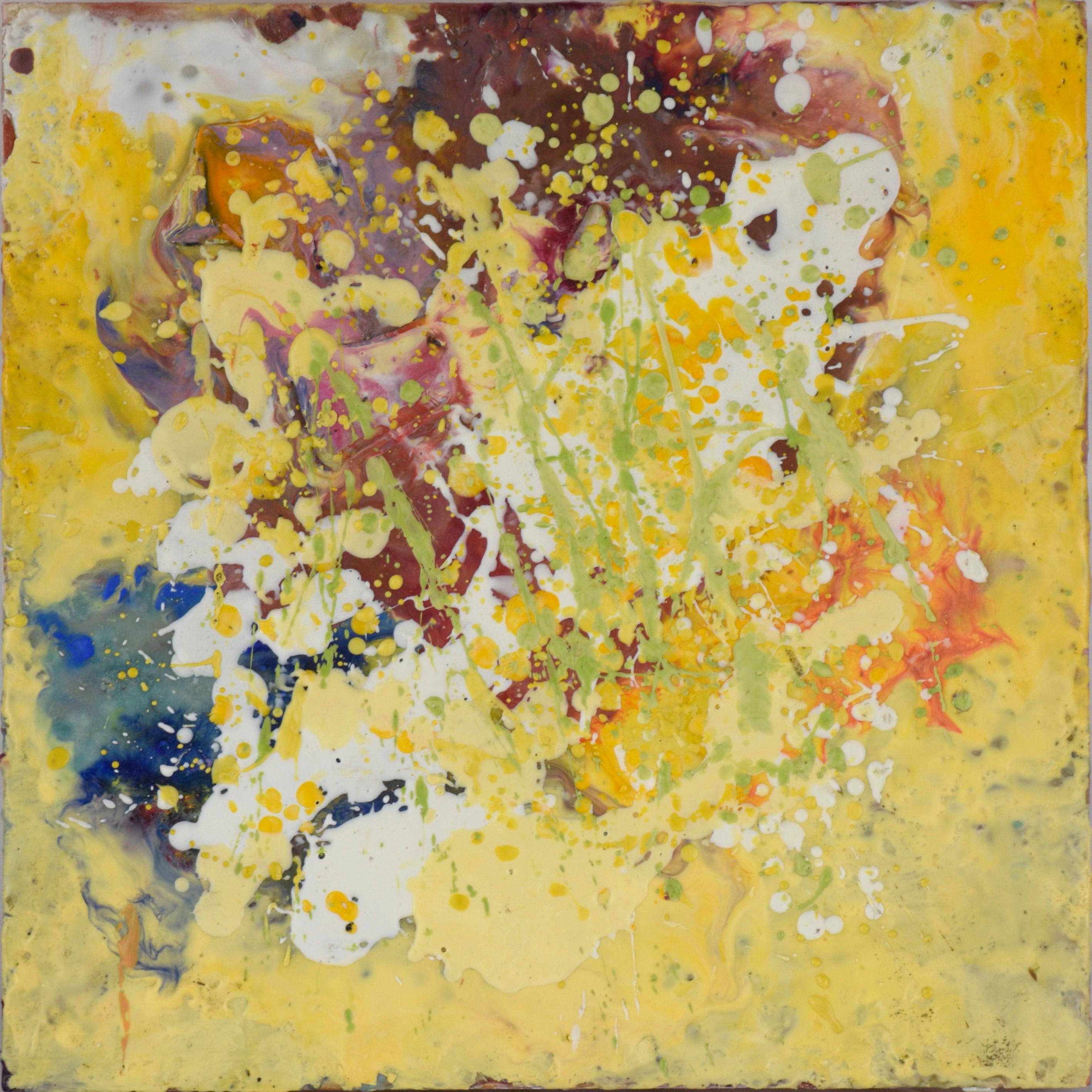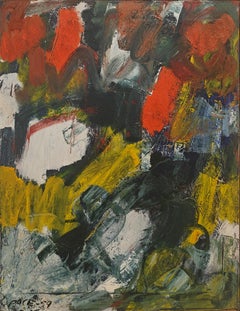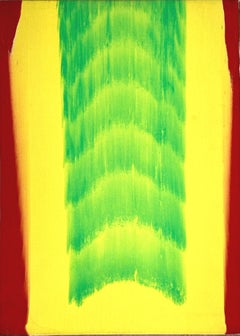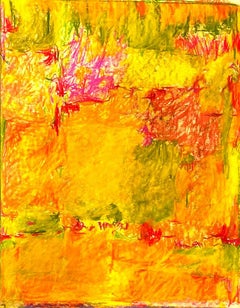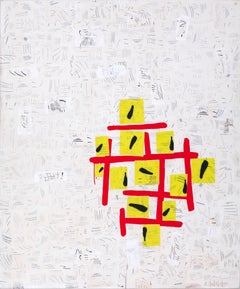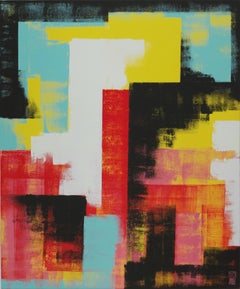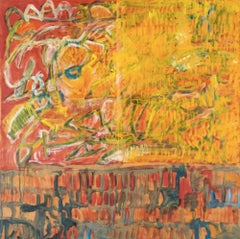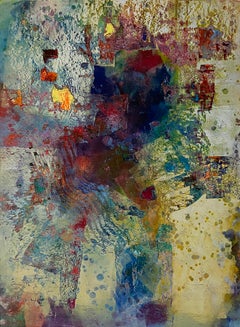Items Similar to "Untitled" Miles Davis, Abstract, Bright Yellow and Red, Jazz Music, Celebrity
Want more images or videos?
Request additional images or videos from the seller
1 of 9
Miles Davis"Untitled" Miles Davis, Abstract, Bright Yellow and Red, Jazz Music, Celebritycirca 1978
circa 1978
$24,000
£18,430.97
€21,121.66
CA$33,786.07
A$37,847.87
CHF 19,685.59
MX$461,665.87
NOK 250,623.79
SEK 236,320.37
DKK 157,646.30
About the Item
Miles Davis
Untitled, circa 1978
Signed lower left; inscribed "To Dorthera" on the reverse
Acrylic on canvas
23 x 23 inches
Miles Davis was arguably the most influential jazz musician in the post-World War II period, being at the forefront of changes in the genre for more than 40 years.
Born into a middle-class family, Davis started on the trumpet at age 13. His first professional music job came when he joined the Eddie Randall band in St. Louis in 1941. In the fall of 1944 Davis took a scholarship to attend the Juilliard School, a convenient passport to New York. It didn't take him long to immerse himself in the New York scene and he began working 52nd Street gigs alongside Charlie Parker in 1945. Soon, Davis found work with Coleman Hawkins and the big bands of Billy Eckstine and Benny Carter.
During the late 1940s, a number of musical contemporaries began to meet and jam regularly at the small apartment of arranger-pianist Gil Evans. Among them were saxophonists Gerry Mulligan and Lee Konitz, and pianist John Lewis. Out of this group of musicians, Davis formed the nonet to record his first major musical statement, Birth of the Cool. In addition to the standard piano, bass, and drums rhythm section, Davis' nonet horn section used French horn and tuba along with trombone and alto and baritone saxophones, lending the band a unique harmonic sound.
In 1955, Davis assembled his first important band with John Coltrane, Red Garland, Paul Chambers, and Philly Joe Jones, adding Cannonball Adderley in 1958. By this time Davis, influenced by George Russell's theories, had begun playing in modes rather than standard chord changes, which led to his most famous album (and the all-time biggest-selling jazz album), Kind of Blue, in 1959. Davis also continued an important musical partnership with Gil Evans, recording four releases in five years: Miles Ahead, Porgy and Bess, Sketches of Spain, and Quiet Nights.
In 1964, Davis assembled a new band of younger musicians, which became known as his second great quintet. This included Herbie Hancock, Tony Williams, Ron Carter, and Wayne Shorter. By this time, the Miles Davis Quintet was recording mostly originals, with all the band members contributing memorable tunes. Davis' horn playing also changed, increasing the spacing of notes to create more suspense in the music.
In 1968, Davis again changed direction, leading the way for electric jazz with the release of In a Silent Way. By the 1969 release of Bitches Brew, as he deepened the electronic elements and rock rhythms of his music, the transformation was complete. By the mid- 1970s, following the debilitating effects of a 1972 auto accident, Davis went into semi-retirement. He returned to the scene in 1980 and resumed touring in 1981, attracting newer fans. From then to 1991, Davis remained vital and popular, receiving the Grammy Lifetime Achievement Award in 1990.
- Creator:Miles Davis (1926 - 1991)
- Creation Year:circa 1978
- Dimensions:Height: 23 in (58.42 cm)Width: 23 in (58.42 cm)
- More Editions & Sizes:Unique workPrice: $24,000
- Medium:
- Movement & Style:
- Period:
- Framing:Framing Options Available
- Condition:
- Gallery Location:New York, NY
- Reference Number:1stDibs: LU1841216697292
About the Seller
5.0
Platinum Seller
Premium sellers with a 4.7+ rating and 24-hour response times
Established in 2022
1stDibs seller since 2022
115 sales on 1stDibs
Typical response time: <1 hour
- ShippingRetrieving quote...Shipping from: New York, NY
- Return Policy
Authenticity Guarantee
In the unlikely event there’s an issue with an item’s authenticity, contact us within 1 year for a full refund. DetailsMoney-Back Guarantee
If your item is not as described, is damaged in transit, or does not arrive, contact us within 7 days for a full refund. Details24-Hour Cancellation
You have a 24-hour grace period in which to reconsider your purchase, with no questions asked.Vetted Professional Sellers
Our world-class sellers must adhere to strict standards for service and quality, maintaining the integrity of our listings.Price-Match Guarantee
If you find that a seller listed the same item for a lower price elsewhere, we’ll match it.Trusted Global Delivery
Our best-in-class carrier network provides specialized shipping options worldwide, including custom delivery.More From This Seller
View All"Untitled, 59-A12" Stephen Pace, Vibrant Yellow and Red, Intense Color Abstract
By Stephen Pace
Located in New York, NY
Stephen Pace
Untitled, 59-A12, 1959
Signed and dated lower left
Oil on canvas
29 x 24 inches
Born in Charleston, Missouri, Stephen Pace grew up in Indiana, where his parents operat...
Category
1950s Abstract Expressionist Abstract Paintings
Materials
Canvas, Oil
"Untitled" Gene Hedge, Abstract Color Field, Yellow Pattern Midcentury Painting
Located in New York, NY
Gene Hedge
Untitled, circa 1970
Acrylic on canvas
29 x 20 3/4 inches
(P097)
Gene Hedge was born (1928) and raised in rural Indiana. After military service, he briefly attended Ball State University in Muncie, Indiana. There he encountered the writing of Laszlo Moholy-Nagy, and the following year (1949) went to study at the Institute of Design in Chicago. He received a B.S. degree in Visual Design from the Institute of Design (1953), and he also took courses at the Art Institute of Chicago and began working in collage.
During this period, the influence of Eugene Dana...
Category
1970s Abstract Abstract Paintings
Materials
Canvas, Acrylic
"Cronus Dining" David Hare, Yellow & White Mythological Surrealist Composition
By David Hare
Located in New York, NY
David Hare
Cronus Dining, 1968
Graphite, acrylic, paper collage on board
44 x 34 inches
“Freedom is what we want,” David Hare boldly stated in 1965, but then he added the caveat, “and what we are most afraid of.” No one could accuse David Hare of possessing such fear. Blithely unconcerned with the critics’ judgments, Hare flitted through most of the major art developments of the mid-twentieth century in the United States. He changed mediums several times; just when his fame as a sculptor had reached its apogee about 1960, he switched over to painting. Yet he remained attached to surrealism long after it had fallen out of official favor. “I can’t change what I do in order to fit what would make me popular,” he said. “Not because of moral reasons, but just because I can’t do it; I’m not interested in it.”
Hare was born in New York City in 1917; his family was both wealthy and familiar with the world of modern art. Meredith (1870-1932), his father, was a prominent corporate attorney. His mother, Elizabeth Sage Goodwin (1878-1948) was an art collector, a financial backer of the 1913 Armory Show, and a friend of artists such as Constantin Brancusi, Walt Kuhn, and Marcel Duchamp.
In the 1920s, the entire family moved to Santa Fe, New Mexico and later to Colorado Springs, in the hope that the change in altitude and climate would help to heal Meredith’s tuberculosis. In Colorado Springs, Elizabeth founded the Fountain Valley School where David attended high school after his father died in 1932. In the western United States, Hare developed a fascination for kachina dolls and other aspects of Native American culture that would become a recurring source of inspiration in his career.
After high school, Hare briefly attended Bard College (1936-37) in Annandale-on-Hudson. At a loss as to what to do next, he parlayed his mother’s contacts into opening a commercial photography studio and began dabbling in color photography, still a rarity at the time [Kodachrome was introduced in 1935]. At age 22, Hare had his first solo exhibition at Walker Gallery in New York City; his 30 color photographs included one of President Franklin Roosevelt.
As a photographer, Hare experimented with an automatist technique called “heatage” (or “melted negatives”) in which he heated the negative in order to distort the image. Hare described them as “antagonisms of matter.” The final products were usually abstractions tending towards surrealism and similar to processes used by Man Ray, Raoul Ubac, and Wolfgang Paalen.
In 1940, Hare moved to Roxbury, CT, where he fraternized with neighboring artists such as Alexander Calder and Arshile Gorky, as well as Yves Tanguy who was married to Hare’s cousin Kay Sage, and the art dealer Julian Levy. The same year, Hare received a commission from the American Museum of Natural History to document the Pueblo Indians. He traveled to Santa Fe and, for several months, he took portrait photographs of members of the Hopi, Navajo, and Zuni tribes that were published in book form in 1941.
World War II turned Hare’s life upside down. He became a conduit in the exchange of artistic and intellectual ideas between U.S. artists and the surrealist émigrés fleeing Europe. In 1942, Hare befriended Andre Breton, the principal theorist of surrealism. When Breton wanted to publish a magazine to promote the movement in the United States, he could not serve as an editor because he was a foreign national. Instead, Breton selected Hare to edit the journal, entitled VVV [shorth for “Victory, Victory, Victory”], which ran for four issues (the second and third issues were printed as a single volume) from June 1942 to February 1944. Each edition of VVV focused on “poetry, plastic arts, anthropology, sociology, (and) psychology,” and was extensively illustrated by surrealist artists including Giorgio de Chirico, Roberto Matta, and Yves Tanguy; Max Ernst and Marcel Duchamp served as editorial advisors.
At the suggestion of Jacqueline Lamba...
Category
1960s Abstract Abstract Paintings
Materials
Paper, Acrylic, Graphite
"Untitled" Diana Kurz, Intense Yellow Abstract Composition on Paper
By Diana Kurz
Located in New York, NY
Diana Kurz
Untitled, circa 1961
Pastel on paper
25 1/2 x 20 1/2 inches
Diana Kurz (born 1936) is an Austrian-born feminist painter. In 1938, Diana Kurz's family fled Austria, first...
Category
1960s Abstract Expressionist Abstract Drawings and Watercolors
Materials
Paper, Pastel
"Untitled" Angelo Ippolito, Yellow 1950s Abstract Expressionism, New York School
By Angelo Ippolito
Located in New York, NY
Angelo Ippolito
Untitled, 1952
Signed and dated on the reverse
Oil on canvas
16 x 36 inches
Provenance:
Gloria Torrice
Estate of the above
Liana Torrice, West Orange...
Category
1950s Abstract Abstract Paintings
Materials
Canvas, Oil
"Untitled" Knox Martin, Abstract Expressionism, Purple, Yellow, Black
By Knox Martin
Located in New York, NY
Knox Martin (1923 - 2022)
Untitled
Signed to lower edge
Acrylic and gold foil on canvas
9 x 9 inches
Knox Martin (1923-2022) was an esteemed New York School painter. Knox Martin was born in 1923 in Barranquilla, Colombia. He was the son of the aviator, painter, and poet William Knox Martin, the first man to fly over the Andes Mountains.
After serving in World War II, Knox Martin attended the Art Students League of New York on the G.I. Bill from 1946-1950, where he studied with Harry Sternberg, Vaclav Vytlacil, Will Barnet, and Morris Kantor.
In 1954, Knox Martin's friend Franz Kline placed a painting of his in the Stable Gallery Annual. Charles Egan of the renowned Charles Egan Gallery saw Knox Martin's painting at the Stable Gallery and asked Martin to show his work in a one-man show for the tenth anniversary of the Egan Gallery.
Since then, Knox Martin was a celebrated painter, sculptor and muralist. Knox Martin had an extensive exhibition record and his work is in museum, corporate and private collections worldwide. His two best-known murals in NYC are Venus and Woman with Bicycle...
Category
Late 20th Century Abstract Abstract Paintings
Materials
Gold, Foil
$3,000 Sale Price
20% Off
You May Also Like
"Red/Yellow"Large Abstraction, Red, Yellow, Black, Cream, White, Pop Sensibility
By Margo Margolis
Located in Wellesley, MA
"Red/Yellow" Large Abstraction of Yellow, Red, Black, White and Cream. Flashe on Canvas, 72 x 60 Inches.
This painting has a very sophisticated sensibility in that it is purely...
Category
2010s Abstract Abstract Paintings
Materials
Mixed Media
Untitled in Yellow and Red, Painting, Acrylic on Canvas
By Ronald Hunter
Located in Yardley, PA
Acrylic Abstract Painting, Original artwork created by Ronald Hunter. A balanced abstract composition with blue, red and yellow tones, made with many layers of acrylic paint. Y...
Category
2010s Abstract Abstract Paintings
Materials
Acrylic
untitled- abstract painting red , blue and yellow dominant
By Olivier Schneider
Located in New York, NY
OLIVIER SCHNEIDER
Untitled (Abstract), 1995
32.0 x 32.0
acrylic on paper, mounted on wood board
ink signed and dated verso
Olivier Schneider delivers a unique and colorful abstract ...
Category
1990s Abstract Abstract Paintings
Materials
Acrylic, Archival Paper
Fiddle-dee-dee, Original Contemporary Yellow Gold and Red Abstract Painting
By Denise Presnell
Located in Boston, MA
Fiddle-dee-dee, Original Contemporary Yellow Gold and Red Abstract Painting
30" x 22" x 1.5" (HxWxD)
This abstract work by artist Denise Presnell brings a large dose of color and ab...
Category
21st Century and Contemporary Abstract Expressionist Abstract Paintings
Materials
Wax, Oil, Panel
Yellow Drips - Expressionist Composition in Wax and Acrylic on Wood Panel
Located in Soquel, CA
Yellow Drips - Expressionist Composition in Wax and Acrylic on Wood Panel
Bold abstract composition by Charles David Francis (American, 1951-20...
Category
Late 20th Century Abstract Expressionist Abstract Paintings
Materials
Wax, Acrylic, Wood Panel
Untitled 48 (abstract acrylic on canvas, colorful, bright, yellow, gestural)
By Carlos Puyol
Located in New York, NY
About the Artist:
Carlos Puyol graduated from the Instituto Universitario Nacional de Arte (IUNA) in Buenos Aires, Argentina. In 2000 he moved to Catalonia to pursue doctorate stud...
Category
2010s Abstract Abstract Paintings
Materials
Linen, Acrylic
